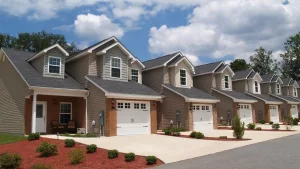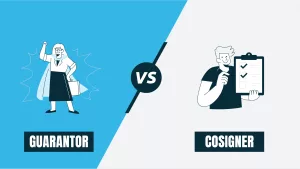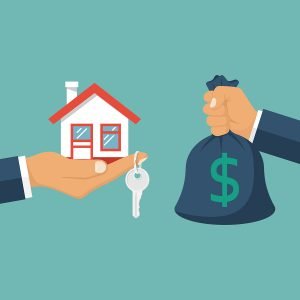Is There an Asset Limit When Buying an HDFC Co-op?
February 15, 2025 by Georges Benoliel
Go Back To Previous Page
Buyers of HDFC cooperatives are not subject to any asset limits. Also, there are no net worth restrictions for purchasers of HDFC apartments in New York City. However, prospective HDFC buyers must adhere to income restrictions at the time of purchase, which vary by building. In 2017, New York City considered implementing an asset limit for HDFC purchasers as part of a regulatory overhaul, but authorities ultimately withdrew this plan.
Although the HDFC program aims to promote affordable housing, it has increasingly become common for wealthier individuals to purchase these properties. Let’s discuss Asset Limit When Buying an HDFC Co-op.
Affordable housing in New York City typically refers to rentals, but what are the options for buyers?
One budget-friendly approach to home ownership is through limited equity housing co-ops, designed for individuals with lower incomes.
In New York City, there are at least 1,100 limited-equity co-ops structured as Housing Development Fund Corporations (HDFCs). These co-ops have strict income limits for buyers and are priced below market rates, making them an attractive option for low—and middle-income residents.
HDFC buildings were established several decades ago when the city allowed tenants in buildings owned by neglectful landlords to form co-ops and take ownership of their homes. According to a 2014 article in The New York Times, some residents were able to purchase their apartments for just $250 each—that’s the correct figure with the right number of zeroes.
High-asset, low-income buyers are often the only viable candidates to make the numbers work for HDFCs.
Suppose an HDFC’s income limit is set too low compared to the market value of an apartment. In that case, it can be difficult for a prospective buyer to secure financing without making a substantial down payment. Lenders typically underwrite loans based on a maximum debt-to-income (DTI) ratio of 43%.
As an example, let’s say that an HDFC you’re considering has a household income limit of $50,160 for a one-person household. This works out to $4,180/month. Only 43% of the purchaser’s $4,180 monthly income can go towards the monthly payment, including the mortgage and co-op monthly maintenance payment.
This amounts to $1,797.50. After reducing this by $579 for monthly maintenance, you have a maximum of $1,218.50 available for your mortgage payment. Your maximum loan size would be approximately $200,000.
If the purchase price is $700,000, you’ll need to make a down payment of $500,000.
For example, if you choose to put down 20%, which is $140,000, your loan amount would be $560,000. For a 30-year fixed loan with an interest rate of 6%, the monthly mortgage payment would be $3,357.
Your monthly payment consists of $3,357 in mortgage payment plus $579 in maintenance, which amounts to $3,936. Based on the 43% max lender DTI requirement, you must earn $9,153/month (or $109,841/year) to qualify for an 80% mortgage loan from a financial institution. However, $109,841 exceeds the building’s income limit of $50,168.
Moreover, this calculation assumes you have no other recurring debt payments, such as a car lease or student loans. If you have a $500 monthly student loan or car payment, you must earn $123,795.35/month to qualify for a mortgage.
This is nearly 2.5 times the HDFC building income limit for purchasers.
In practice, the combination of low HDFC income limits and high purchase prices results in buyers of HDFC co-op,s who are often high-asset, low-income individuals.
Students from affluent families fit the criteria perfectly. A student may qualify based on low income, while a parent can provide a significant gift to cover the down payment. Future regulatory changes could introduce an asset limit for prospective Housing Development Fund Corporation (HDFC) purchasers. In 2017, the De Blasio administration aimed to increase the number of HDFCs under the oversight of the Department of Housing Preservation and Development (HPD) by encouraging HDFCs to sign a new Regulatory Agreement in exchange

A woman sitting at a table with a calculator and documents
for a more generous tax break. However, only 207 of 1,048 HDFC co-ops had a Regulatory Agreement with HPD.
HPD’s proposed Regulatory Agreement included an asset limitation for prospective buyers and other controversial provisions affecting current HDFC owners. The proposed overhaul of the Regulatory Agreement faced significant opposition from HDFC stakeholders, leading to the abandonment of the plan.
Asset Limit When Buying an HDFC Co-op: How do income limits work for HDFCs?
HDFC cooperatives generally have a maximum income limit of 165% of the Area Median Income (AMI) for potential buyers. However, many HDFCs establish their income limits lower than this maximum threshold. For instance, HDFCs sold under a 30-year Regulatory Agreement often impose a stricter income limit of 120% of the AMI for prospective buyers.
Additionally, some HDFCs determine purchaser income limits using a formula specified in Section 576 of the Private Housing Finance Law in New York. This formula considers household size, monthly maintenance fees, utility costs specific to the purchased apartment, and the seller’s original purchase price.
How much are buyer closing costs for HDFCs?
HDFC buyer closing costs typically range from 1% to 2% of the purchase price. You can potentially reduce these costs by requesting a commission rebate. HDFC buyer closing costs include various fees, such as attorney fees, building application fees, move-in-related fees, and the price of a lien search.
If you are financing your purchase, you must also cover additional fees, including a lender application fee, appraisal fee, bank attorney fee, recognition agreement fee, and a UCC-1 filing fee.
It’s important to note that closing costs for buyers are generally comparable between traditional cooperatives (co-ops) and HDFCs.
How do you get an HDFC co-op?
The Urban Homesteading Assistance Board (UHAB) empowers low—to moderate-income residents to achieve their housing goals. It offers services and training for individuals purchasing HDFC (Housing Development Fund Corporation) apartments. Reaching UHAB for advice and resources can be an excellent first step in your home-buying journey.
The organization also runs a Cooperative Improvement Program that assists approximately 20 percent of all HDFCs identified as distressed, benefiting 6,209 families across 266 buildings.
To find an apartment, search for “HDFC” on listing sites like StreetEasy, which also offers an “income-restricted” filter. A few “sponsored” and “featured” listings may appear, so reading the fine print is essential.”You need to do your due diligence,” advises Joseph. “Find out whether the building has been approved for financing and understand the maximum income guidelines.”
The sale process for HDFC apartments resembles a slower version of the typical co-op buying experience, as it involves oversight from a government agency and requires additional paperwork. After the government agency approves your application, they send your package to the board for approval, and subsequently, they will schedule an interview. The closing process may take several more weeks.



